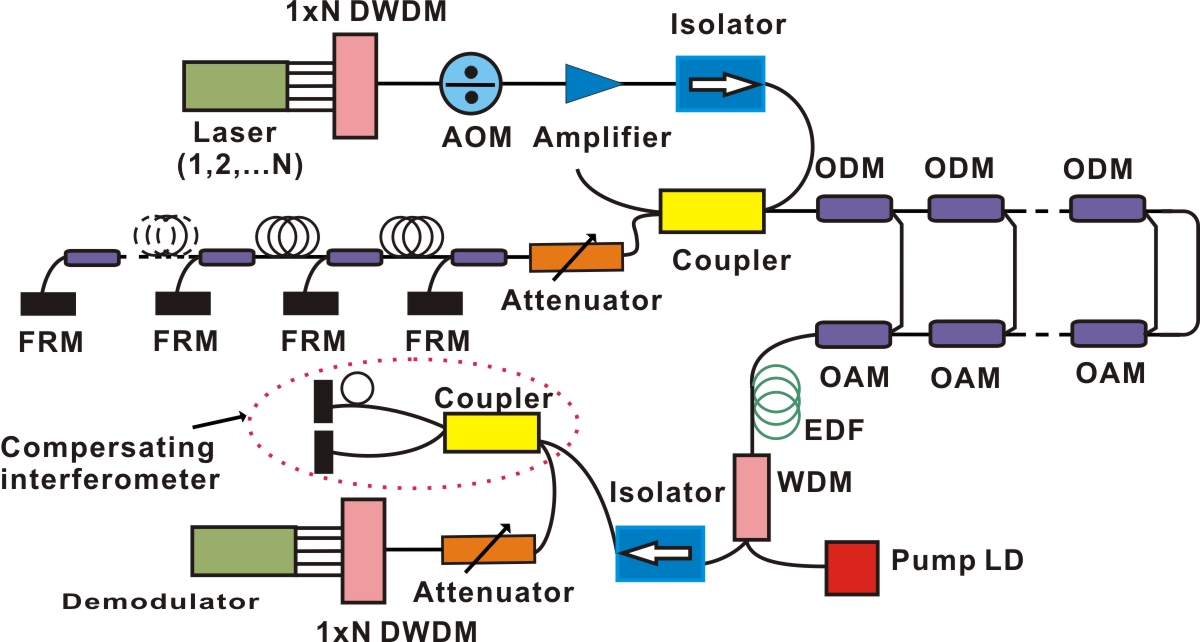Fiber Optic Hydrophone Applications
Sound waves are the only form of energy known to humans that can be transmitted over long distances in seawater. Other forms of energy radiation, such as electromagnetic waves, cannot be transmitted over long distances in seawater because their losses in seawater are about three orders of magnitude greater than sound waves. In the aqueous medium, the attenuation coefficient of sound waves is small and can be transmitted over long distances, so the sound waves are the best information carriers under water. A hydrophone is a sensor that detects, locates, and recognizes underwater targets by receiving acoustic signals.
The traditional hydrophone is a piezoelectric ceramic hydrophone. The sonar array composed of this piezoelectric ceramic hydrophone requires a large number of underwater electronic components for channel multiplexing and data transmission, as well as signal transmission cables and power cables. These electronic devices are expensive, heavy, and often fail due to underwater sealing problems, making the system very poorly reliable. With the continuous advancement of science and technology and the continuous development of the fiber-optic communication industry, fiber-optic hydrophones are a field of great interest in the field of underwater acoustics research, and have gradually moved from early laboratory research to engineering applications.
The fiber-optic hydrophone is a new type of hydrophone based on optical fiber and optoelectronic technology. It converts underwater acoustic vibration into optical signal through high-sensitivity optical coherent detection, and transmits optical signal to the signal processing system through optical fiber to extract acoustic signal information. High frequency, wide frequency response, anti-electromagnetic interference, harsh environment, light structure, easy telemetry and large-scale array.
Fiber optic hydrophones are mainly used for monitoring sound propagation, noise, reverberation, seabed acoustic characteristics, target acoustic characteristics, etc. in marine acoustic environments. It can be used for marine and terrestrial oil and gas exploration, as well as for marine and terrestrial seismic wave detection and marine environmental detection. It is also an advanced detection method for modern naval anti-submarine warfare, underwater weapon testing, offshore oil exploration and marine geological survey.
How does a fiber optic hydrophone work?
A fiber optic hydrophone is usually composed of a transmitter, that is, an output light source, a hydrophone array, and a receiver. The light emitted by the laser needs to be time-division multiplexed by pulses with fixed time intervals through the acousto-optic modulator. The multiplexing method of the hydrophone array can reduce the cost of the whole system. The multiple sensing channels use the same laser source. The following figure shows a schematic diagram of a fiber optic hydrophone system using wavelength division multiplexing/time division multiplexing:

Figure 1: Schematic diagram of fiber optic hydrophone system using wavelength division multiplexing/time division multiplexing
Device descriptions in the system:
- Laser: narrow linewidth fiber laser;
- AOM (Acoustic-Optic Modulator): acousto-optic modulator;
- WDM (Wavelength Division Multiplexing): wavelength division multiplexer;
- OAM/ODM (Optical Add/Drop Multiplexing): optical add/drop multiplexer, three-port 100GHz DWDM;
- ISO: isolator;
- Coupler: fiber coupler;
- EDF: erbium-doped fiber;
- Pump: pump laser;
- FRM (Faraday Rotation Mirror): Faraday rotator Mirror;
- Attenuator: Optical attenuator;
- Demodulator: Optical demodulator.
Precautions
In the case of time division multiplexing using a coupler, the main factors limiting the number of system channels are the split ratio of the coupler and the sampling rate;
The position of the erbium-doped fiber affects the noise characteristics of the system.
DK Photonics offers a variety of passive components with compact package for building Fiber Optic Hydrophone systems. Contact DK Photonics regarding your requirements.
Click here to download the PDF file: 

